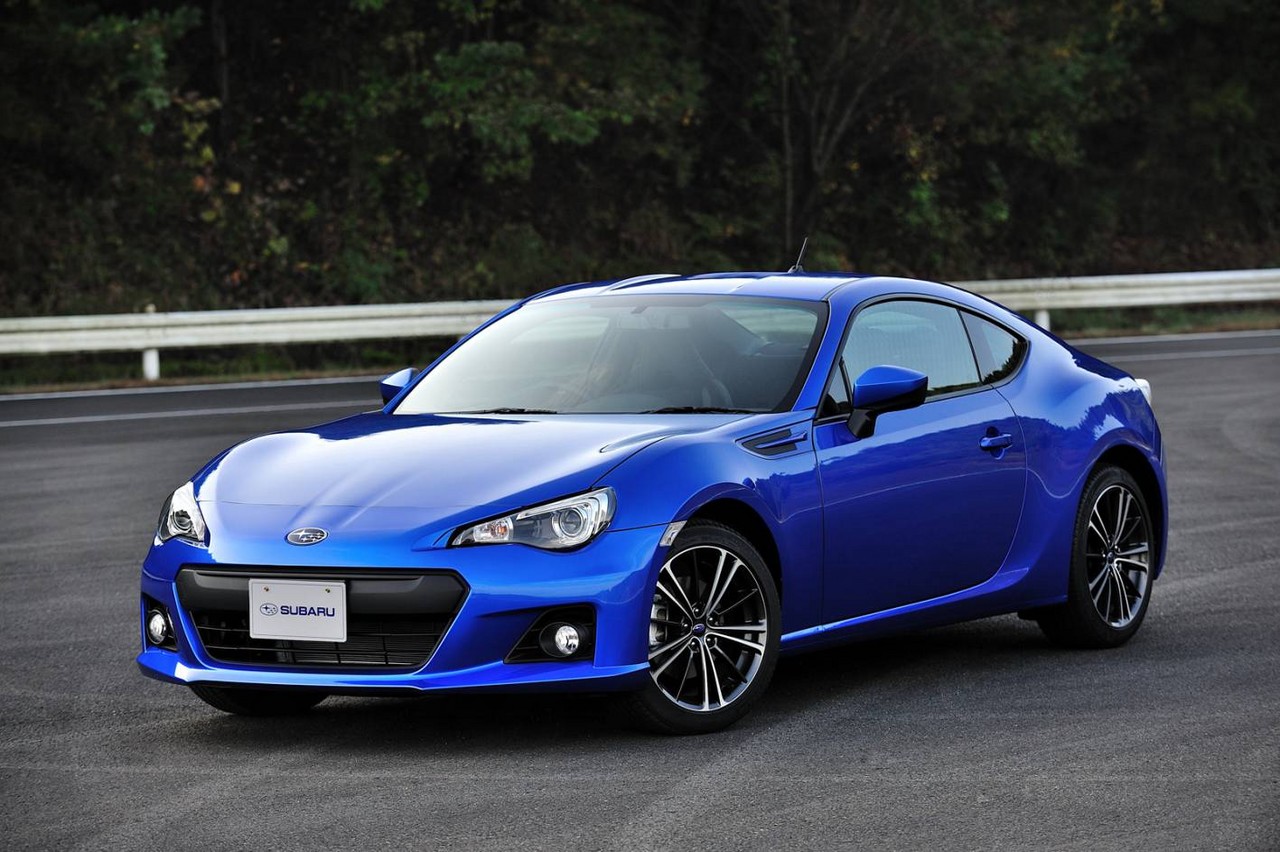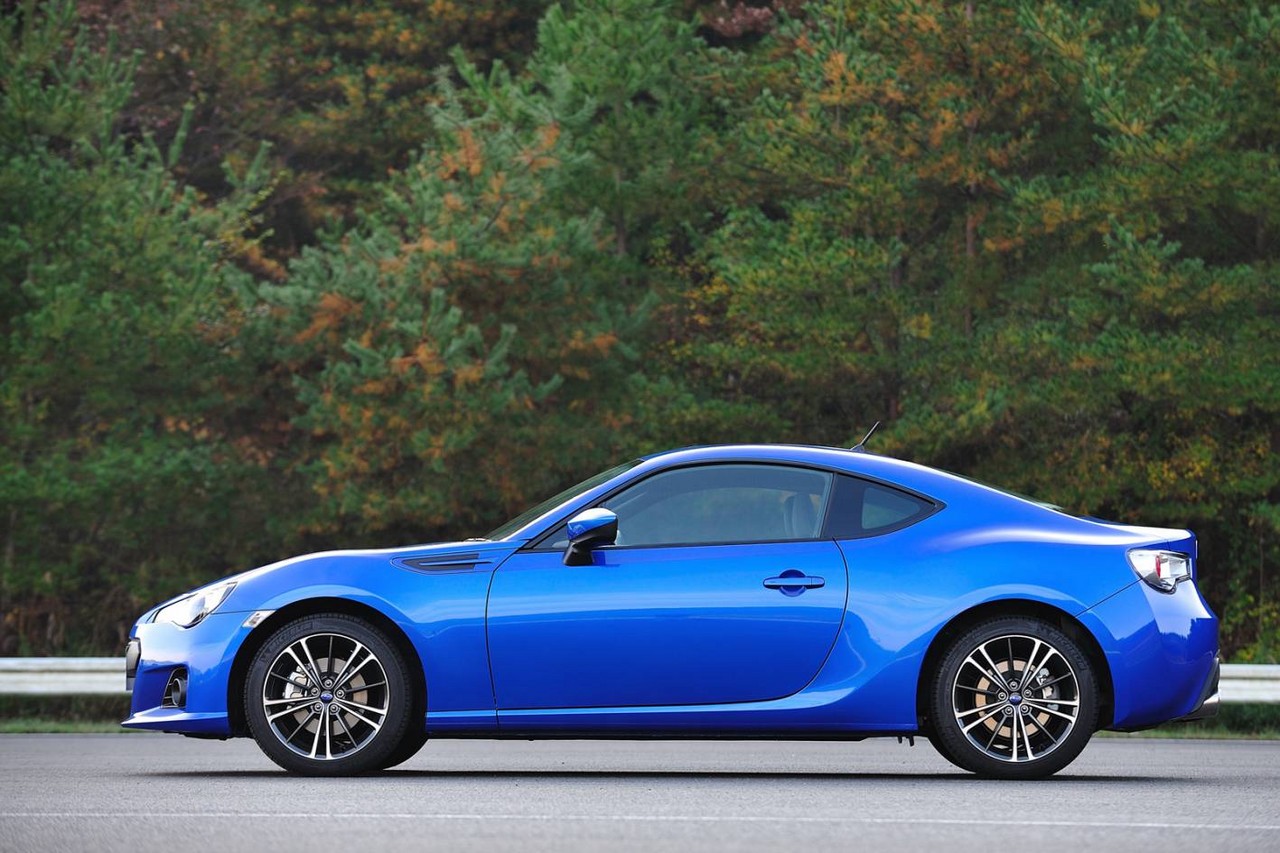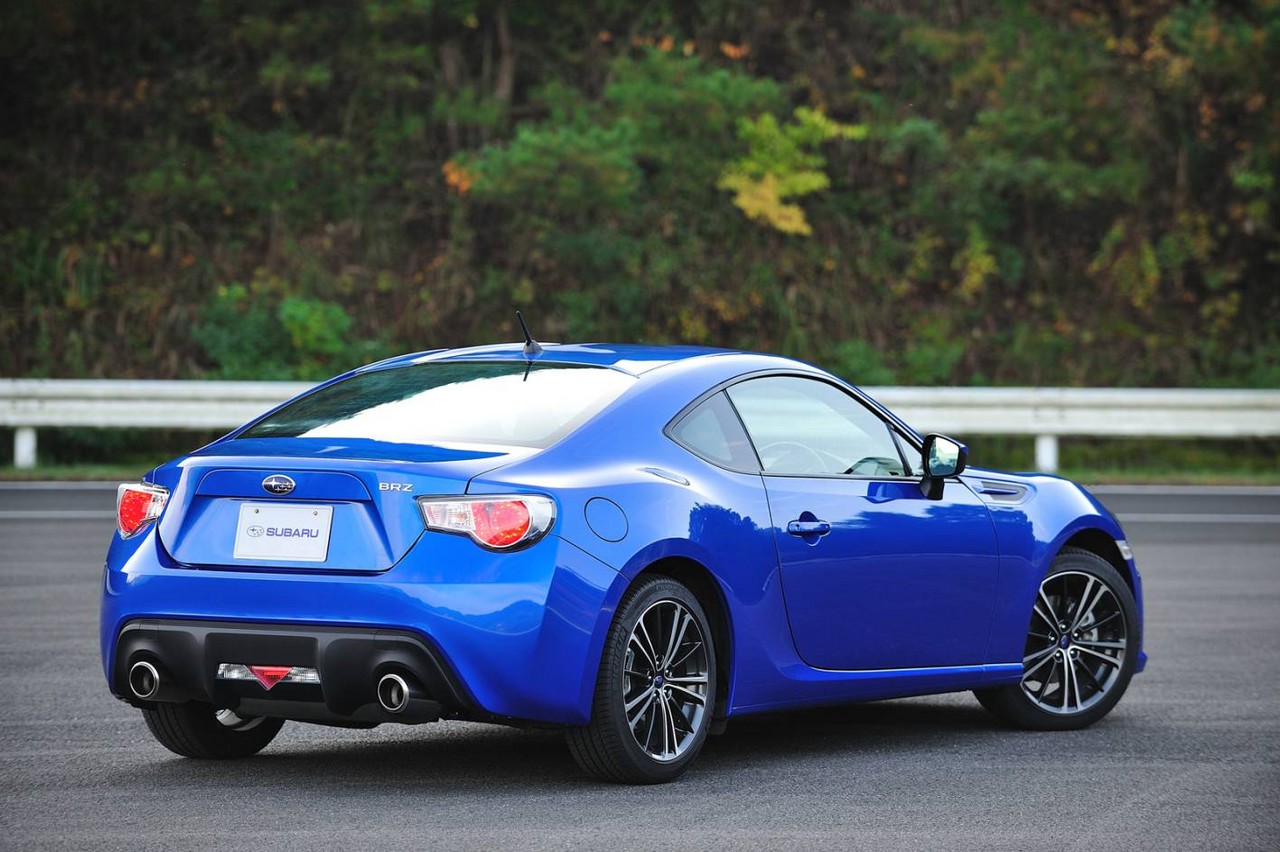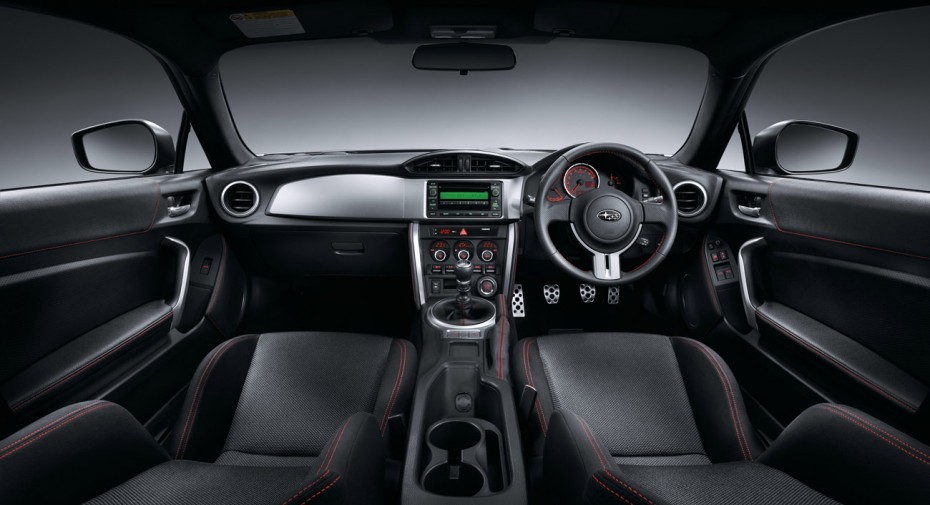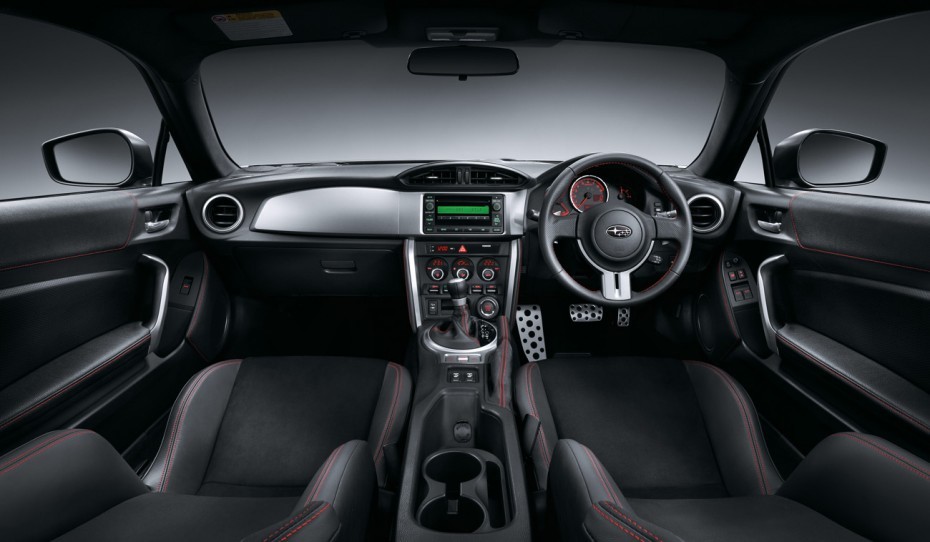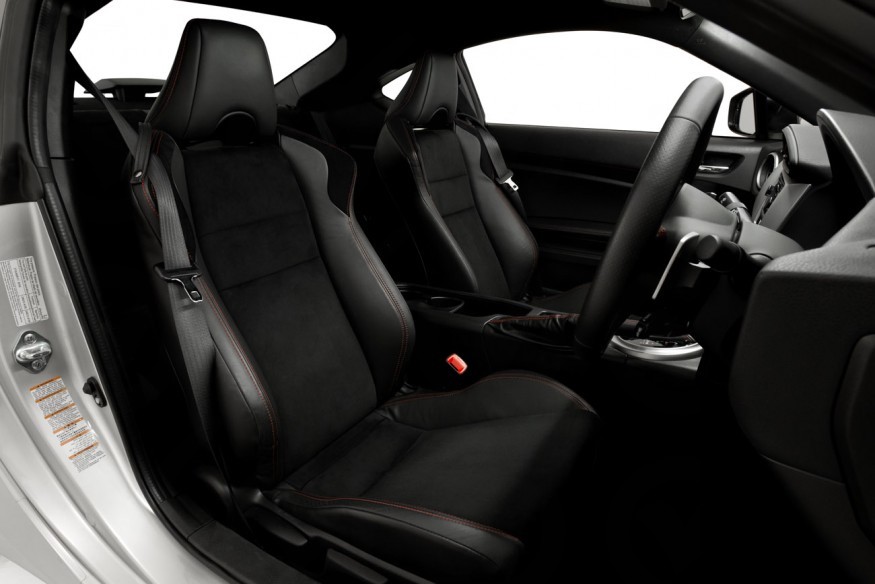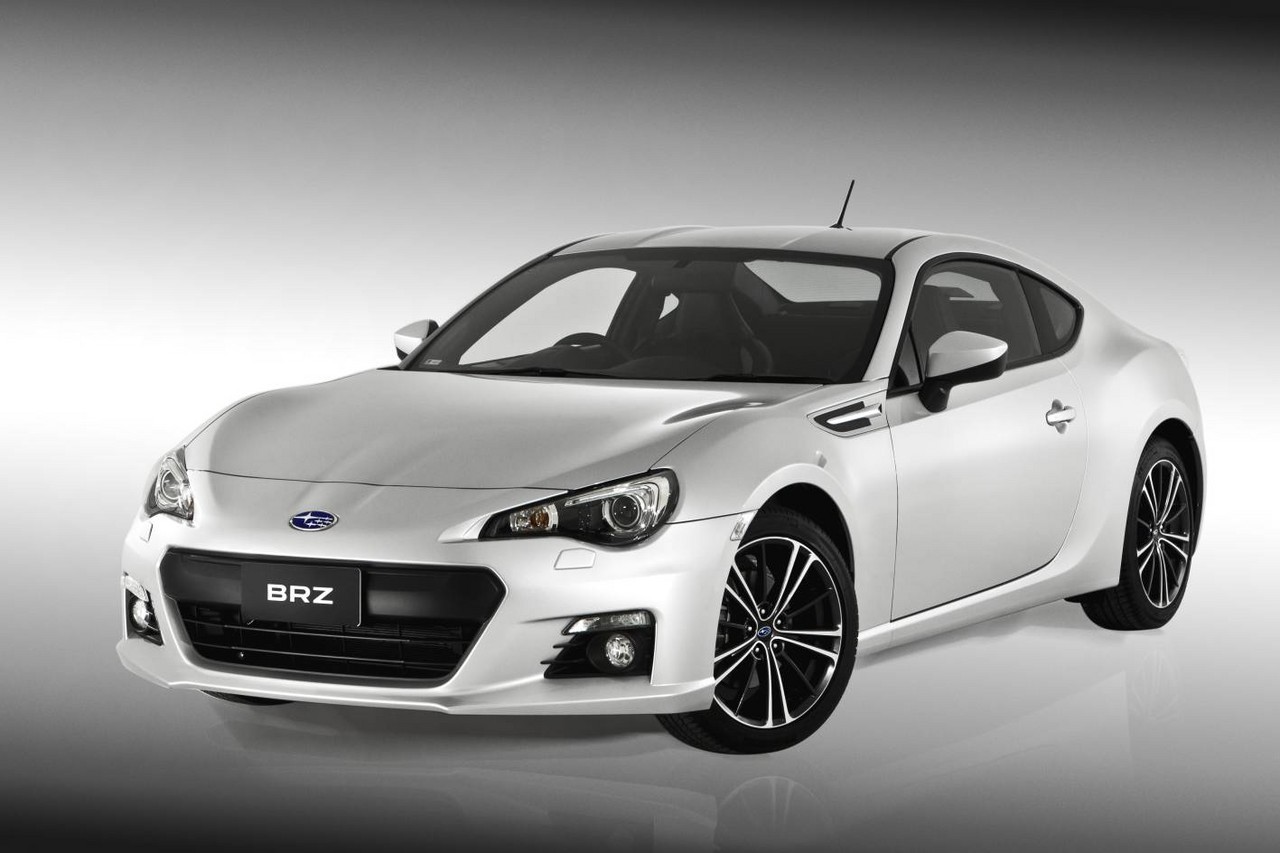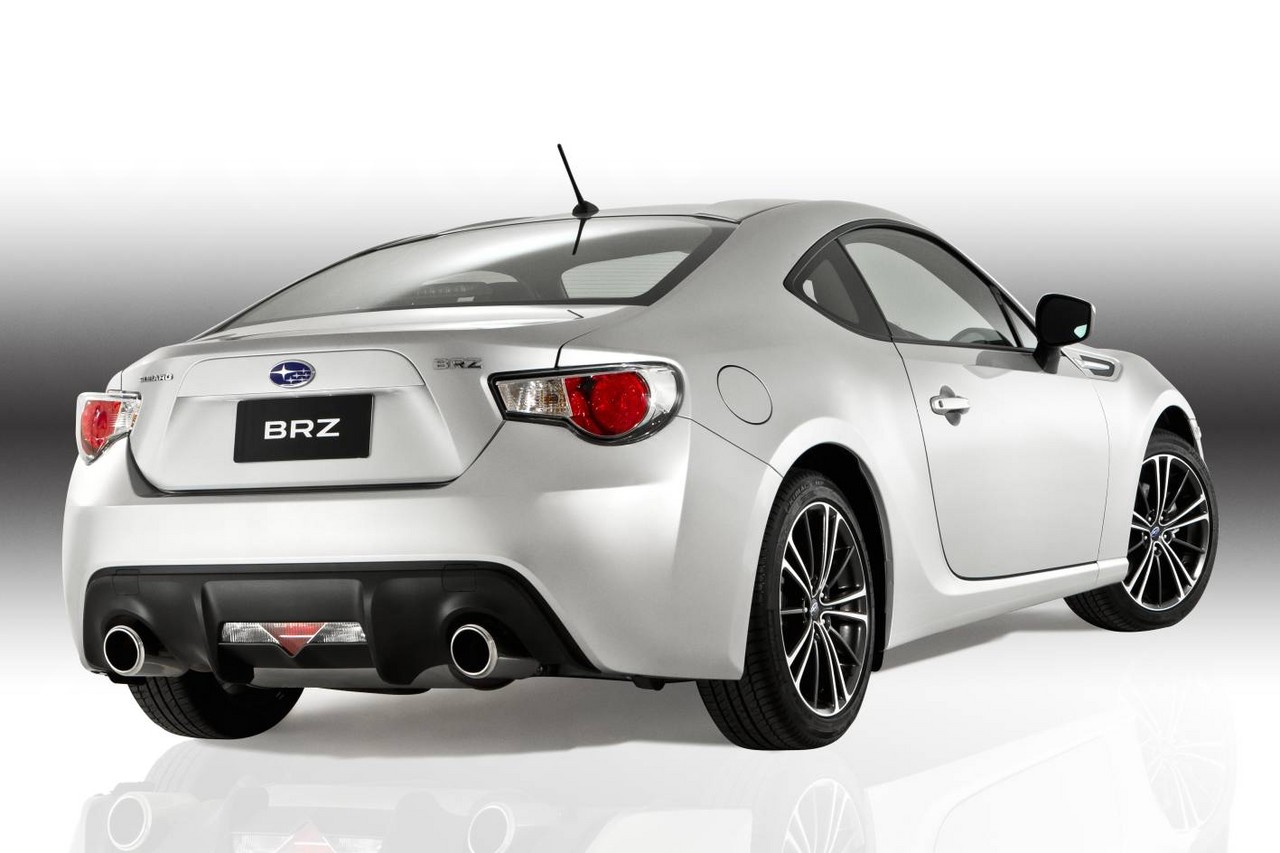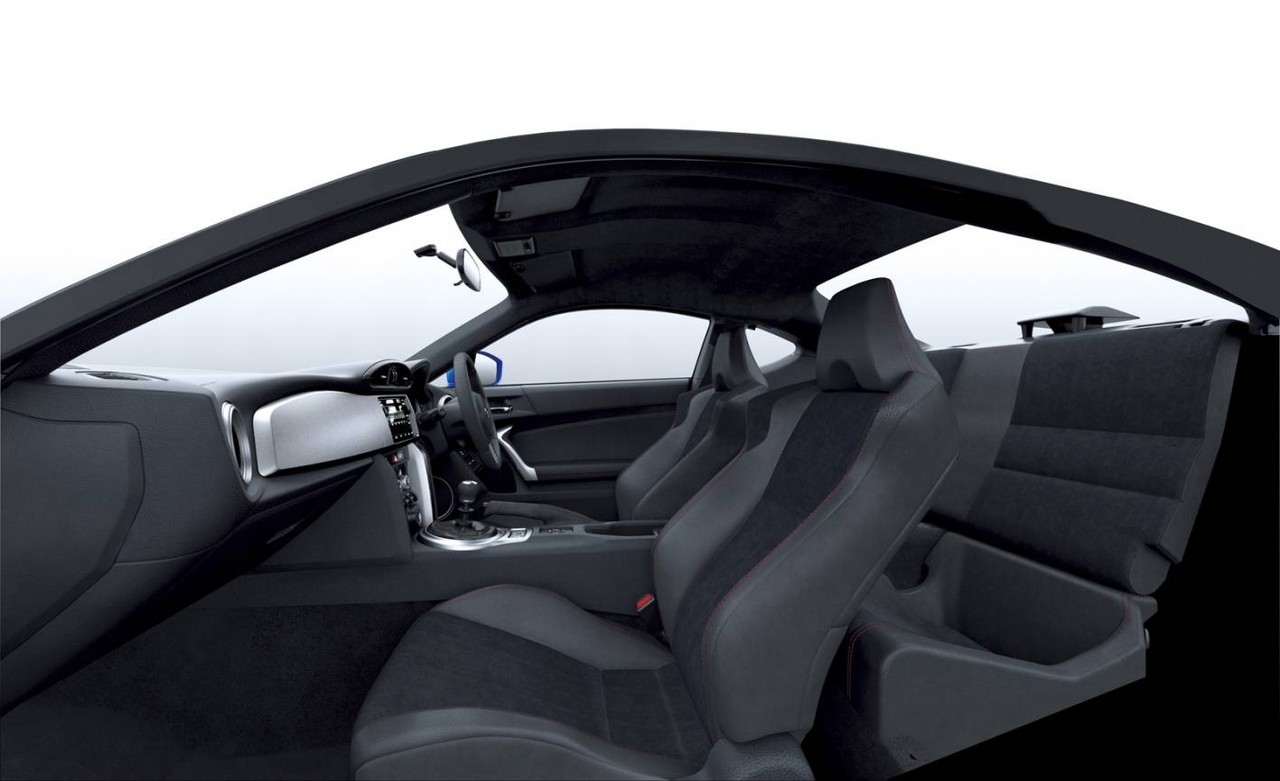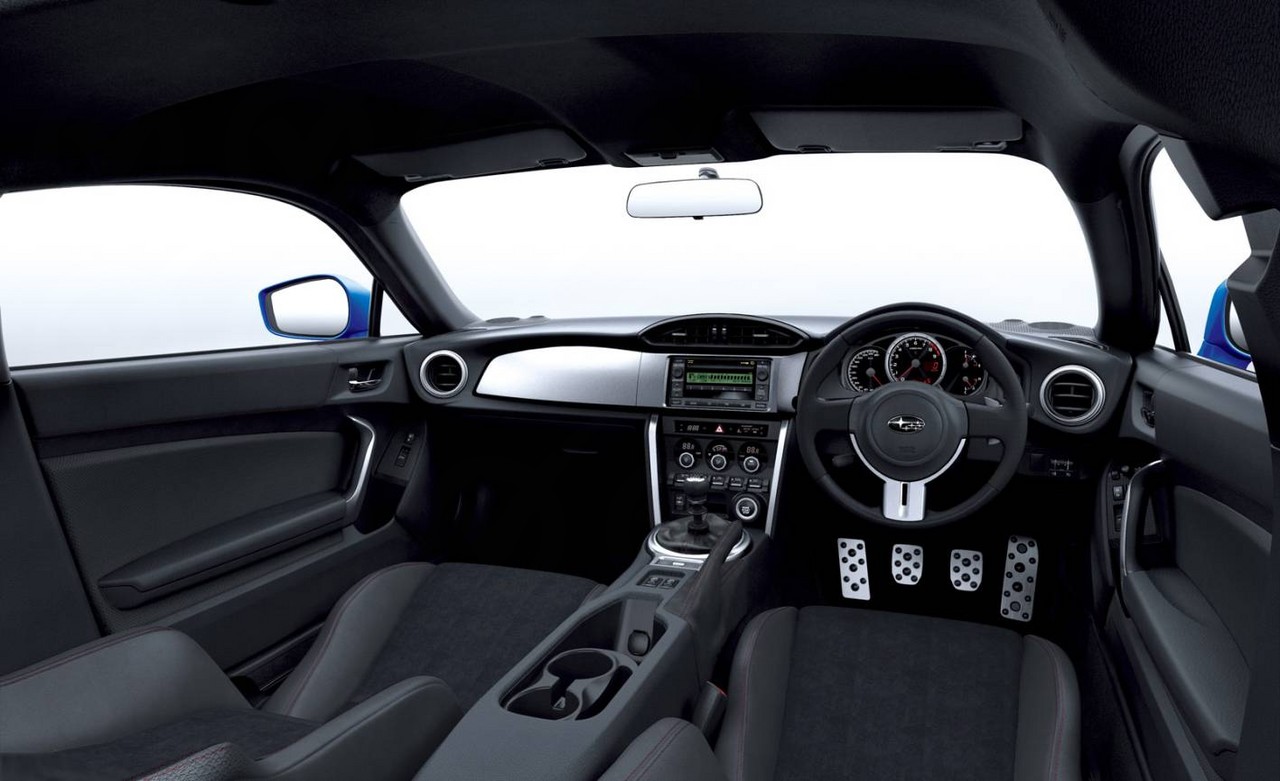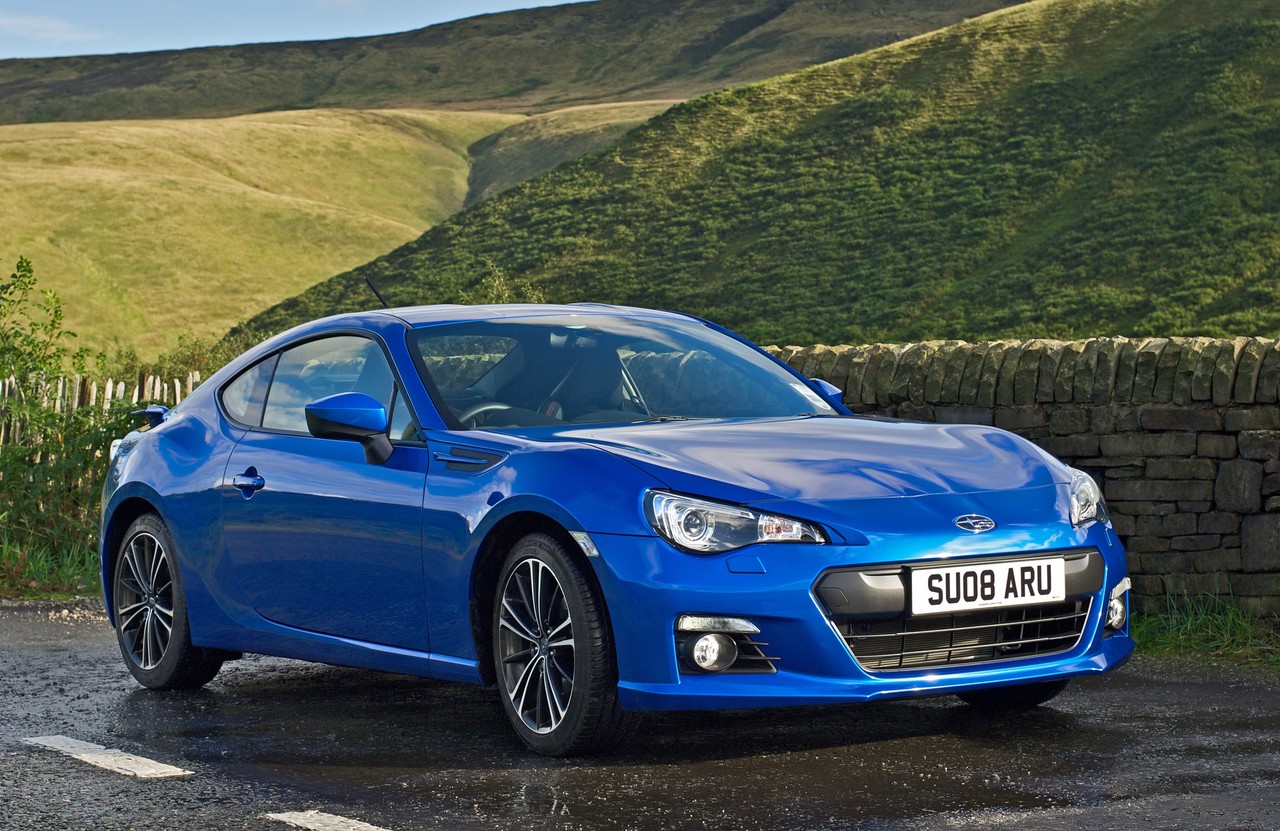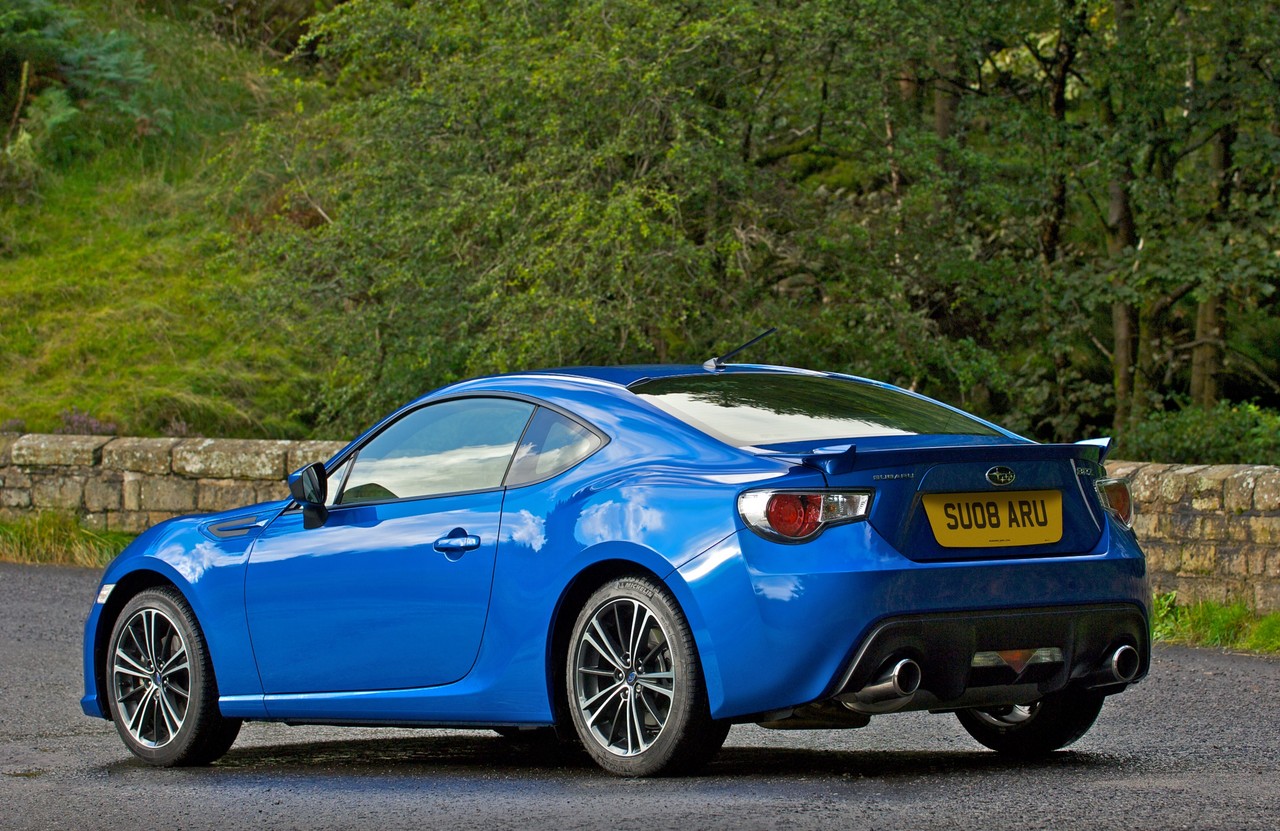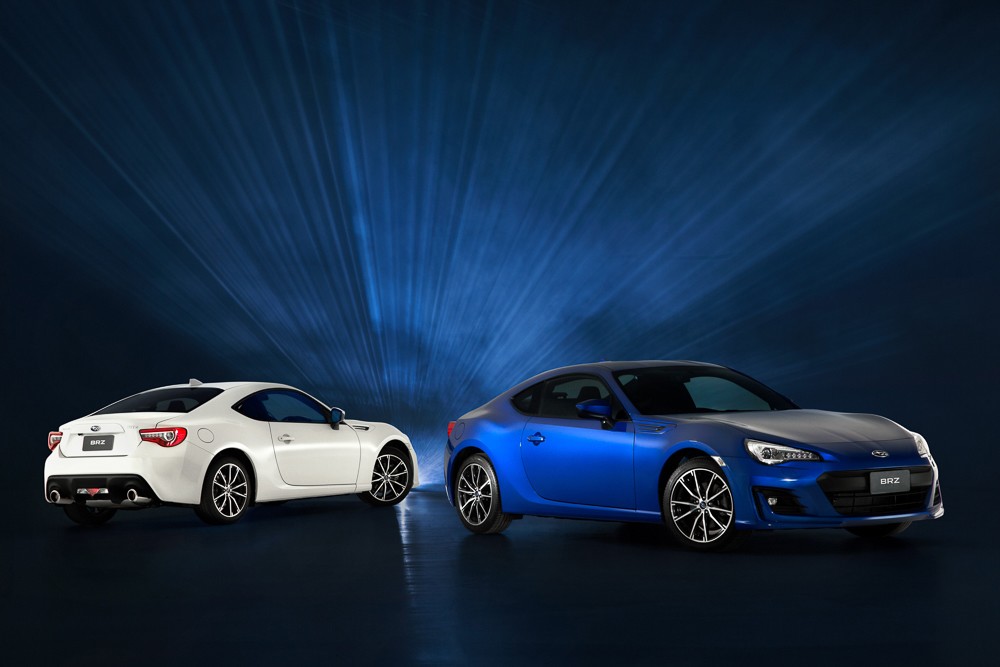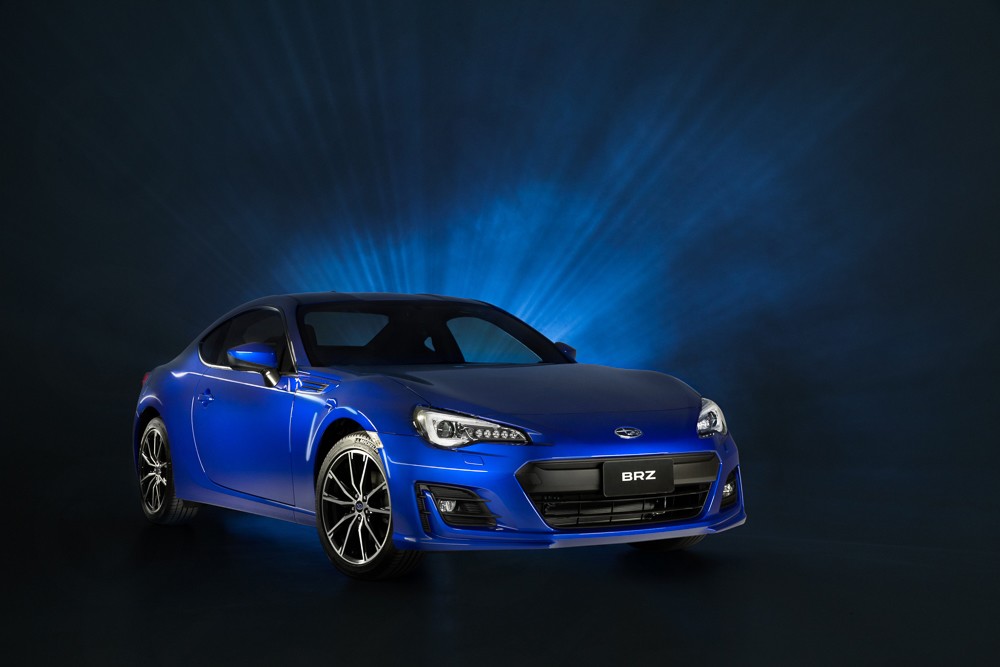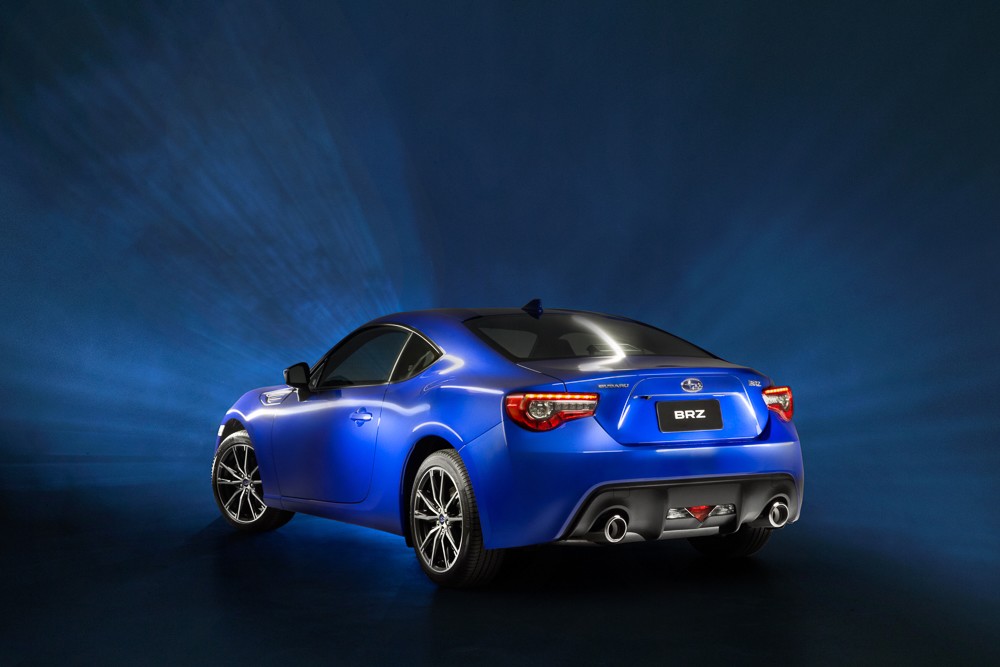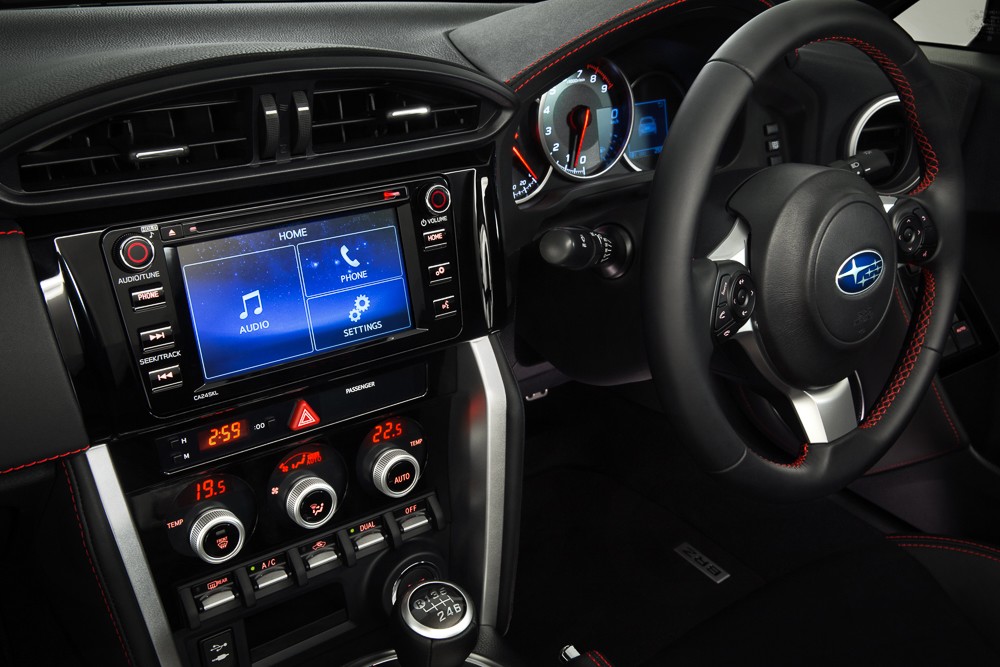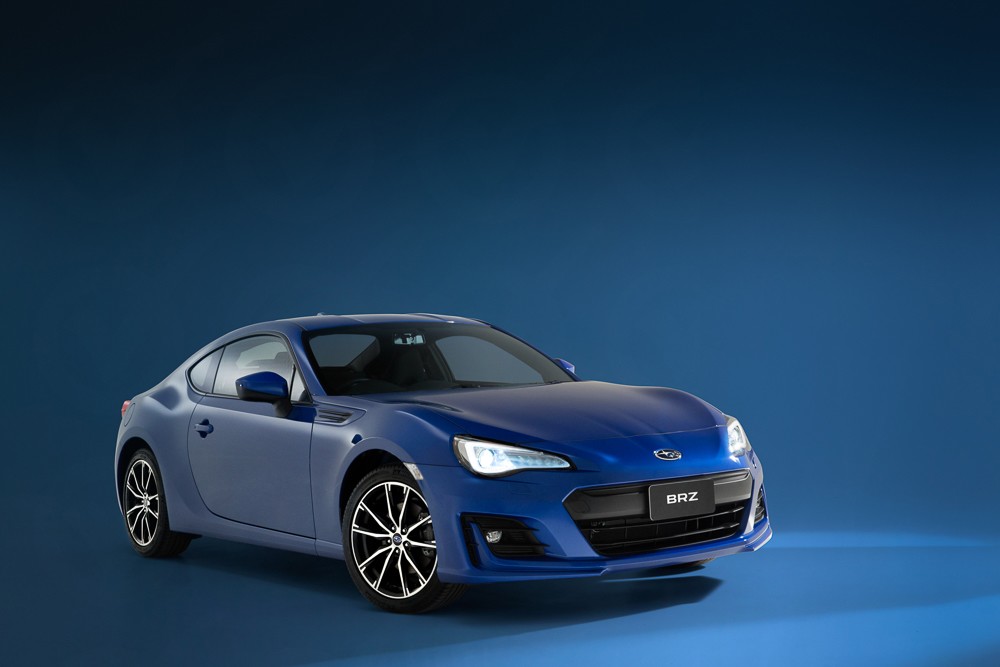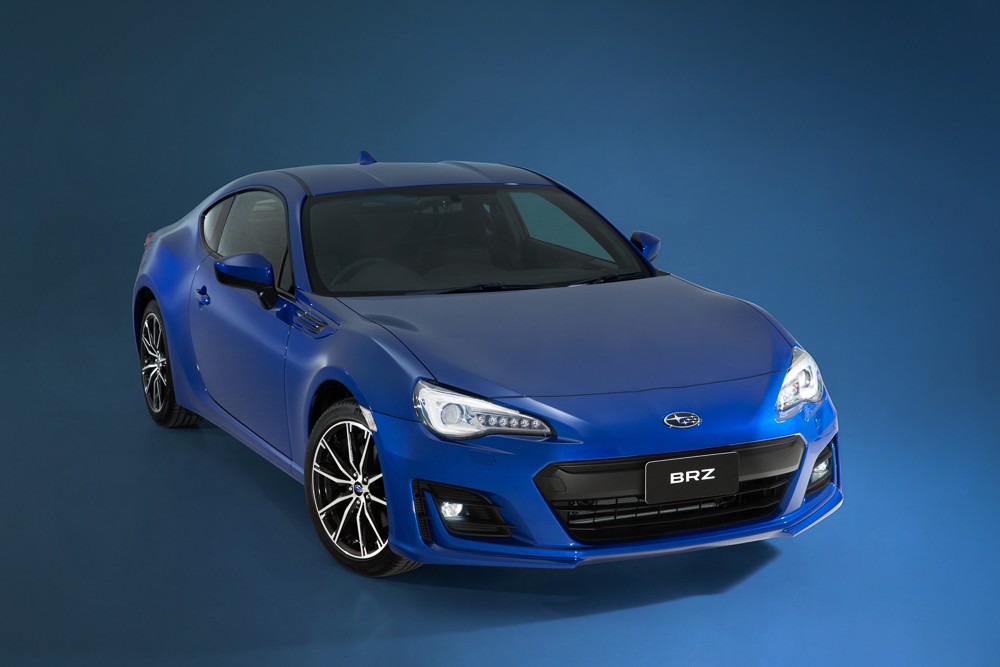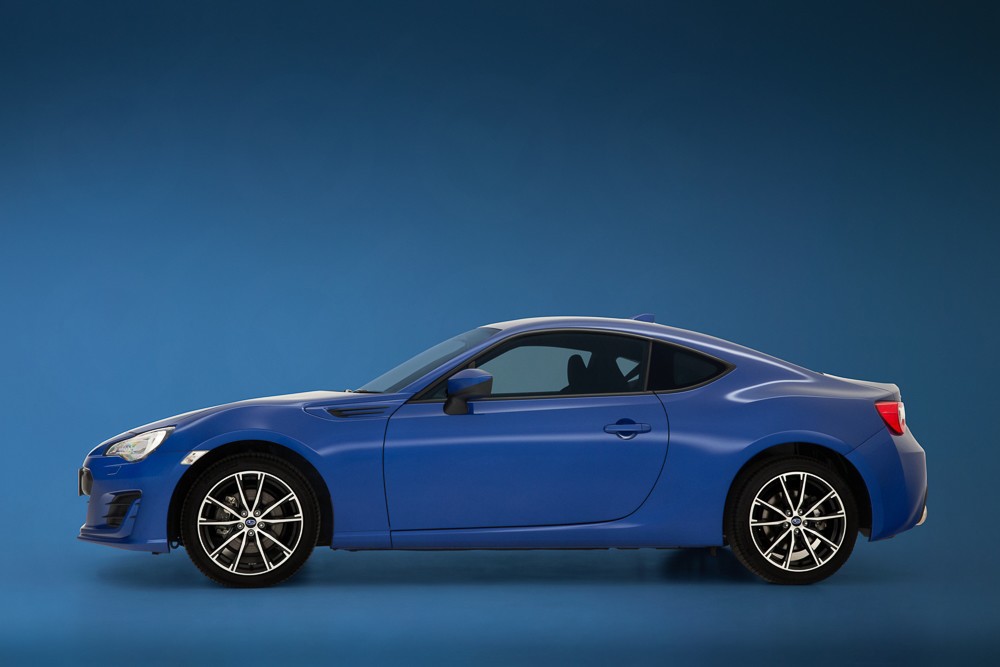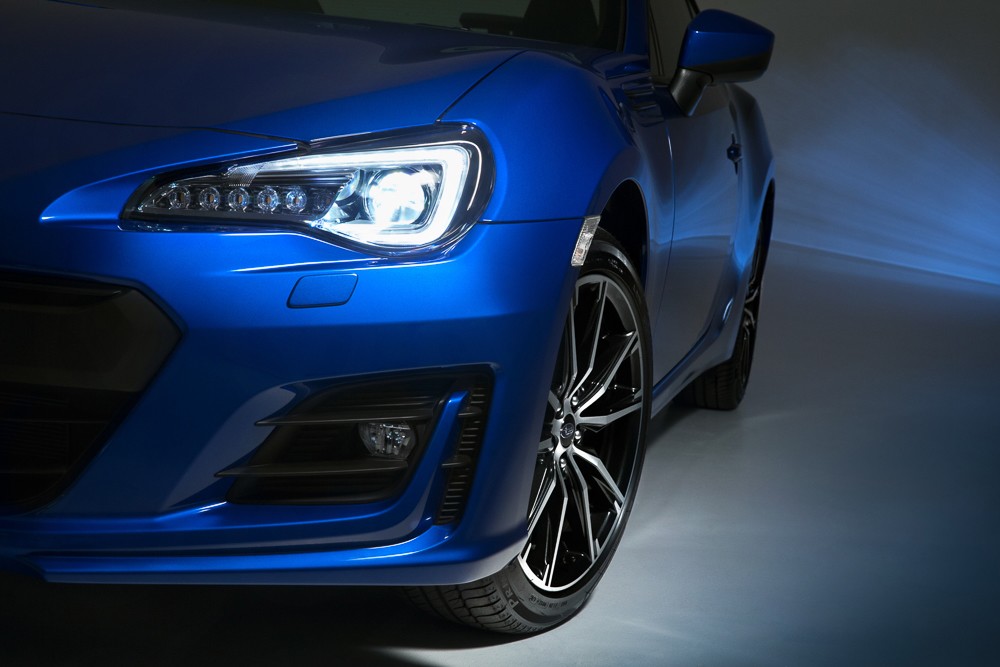
- Free-revving 2.0-litre FA20 engine
- Refined six-speed manual transmission
- Impressive dynamics and acceptable ride
- More precise, neutral handling than Toyota 86
- Accurate, well-weighted steering provides excellent feedback
- Not as quick as rivals and chassis can handle more power
- Unjustified price premium to Toyota 86
- Reports of uneven idle and stalling
Review: Subaru Z1 BRZ (2012-16)
Overview
Released in July 2012, the Subaru Z1 BRZ was a two door coupe with two-plus-two seating. Jointly developed with Toyota and closely related to the Toyota 86 , the rear-wheel drive Subaru BRZ was powered by a 2.0-litre horizontally-opposed (or boxer) engine that was mated to either a six-speed automatic or manual transmission. The Subaru BRZ was manufactured at Subaru’s factory in Gunma, Japan.
Compared to the Toyota 86 , the Subaru BRZ could be identified by its unique front bumper with hexagonal grille, front fender vents and alloy wheel design. The BRZ was also fitted with firmer front suspension springs front suspension and a revised damper tune to limit body roll and reduce oversteer.
FA20D engine
The 2.0-litre FA20D engine had an alloy cylinder block and head, double overhead camshafts, four valves per cylinder, variable valve timing (intake and exhaust) and a compression ratio of 12.5:1. The engine also featured a dual injection system whereby both high-pressure direct-injection and lower-pressure indirect injection would be used at lower engine revolutions for reduced emissions. In high-load situations, however, only direct fuel injection was used.
With the manual and automatic transmissions, the Subaru BRZ could accelerate from rest to 100 km/h in 7.6 and 8.2 seconds, respectively.
| Engine | Trans. | Peak power | Peak torque | |
|---|---|---|---|---|
| Subaru BRZ | 2.0-litre FA20D petrol F4 | 6sp man., 6sp auto |
147 kW at 7000 rpm | 205 Nm at 6400-6600 rpm |
Dimensions and body
The Subaru BRZ was 4240 mm long, 1775 mm wide, 1285 mm tall and had a 2570 mm long wheelbase. With the rear seats in position, the Subaru BRZ had a luggage capacity of 218 litres.
With the manual and automatic transmissions, the Subaru BRZ had a kerb mass of 1216 kg and 1238 kg, respectively.
Suspension and steering
The Subaru BRZ had MacPherson strut front suspension with reverse-positioned L-shaped lower-arms (that enabled the engine to be mounted lower and closer to the centre of the vehicle) and double wishbone rear suspension.
The Subaru BRZ had rack-and-pinion steering with electric power-assistance; its turning circle was 10.8 metres.
Safety equipment
Standard safety equipment for the Subaru BRZ included dual front airbags, a driver’s knee airbag, front side airbags, curtain airbags, ABS, electronic brake force distribution, brake assist, electronic stability control, traction control and front seatbelts with pretensioners and load limiters.
Brakes
The Subaru BRZ had ventilated front and rear disc brakes measuring 294 mm by 24 mm at the front and 290 mm by 18 mm at the rear.
ANCAP crash testing
In ANCAP crash testing , the Subaru BRZ received a five star adult occupant protection rating with a score of 34.4 out of 37. In the offset crash test, there was a slight risk of serious leg injury for both front occupants and a slight risk of serious chest injury for the front passenger. In the side impact test, there was a slight risk of serious chest injury.
Features: Subaru BRZ
Standard features for the Subaru BRZ included 7.0J x 17-inch alloy wheels with 215/45 R17 Michelin Pilot Primacy tyres, a six speaker sound system with a CD player, MP3-compatibility, auxiliary inputs (3.5 mm/USB), and Bluetooth connectivity with voice recognition, dual-zone climate control air conditioning, cruise control, front fog lights, bi-xenon headlights, daytime LED running lights, automatic headlights, flat folding rear seats, a leather-wrapped steering wheel and gearshift knob, remote central locking with proximity key, power windows and mirrors (with retracting function), a height and reach adjustable steering column, height adjustable front seats, two 12 volt power outlets and an immobiliser.
As standard, the Subaru BRZ was fitted with a limited slip rear differential.
Black leather and suede-like Alcantara seats with contrast stitching were available as an extra-cost option.
Subaru BRZ S
Released in July 2013, the BRZ S was fitted with a ‘Sports Pack’ which consisted of:
- 17-inch black STI alloy wheels;
- A lowered coil spring set;
- Front, side and rear under spoilers;
- A rear diffuser;
- A crystal black mica boot lip spoiler;
- A flexible tower bar;
- Push-button start; and,
- For models with manual transmissions, an STI gear shift lever assembly and Duracon shift knob.
The Sports Pack could also be retrofitted to existing BRZ vehicles.
August 2014: BRZ update
The BRZ was updated in August 2014 for the ‘2015 Model Year’. As part of the update,
- Revised suspension dampers were fitted for improved ride quality on uneven surfaces;
- Inside, a frameless rear-view mirror and silver instrument panel highlights were introduced;
- The BRZ was fitted with a ‘shark fin’ radio antenna; and,
- Available paint finishes were extended to include crystal white pearl, ice silver metallic and WR blue pearl.
2014 Subaru BRZ Special Edition
The BRZ Special Edition was released in September 2014. Compared to the standard BRZ, the Special Edition was distinguished by its
- 17-inch STI alloy wheels;
- GT stripes;
- STI front, side and rear side under spoilers;
- STI boot lip spoiler;
- Rear diffuser;
- STI push-button start switch; and,
- For manual models, STI short shift assembly and gear shift knob.
2015 Subaru BRZ Hyper Blue Special Edition
In October 2015, fifty (50) Subaru BRZ Hyper Blue Special Editions were released in Australia. The Subaru BRZ Hyper Blue was fitted with a flexible tower bar and could be identified by its Hyper Blue paint finish, black alloy wheels, front and rear lip spoilers, black door mirrors, black side strakes and black badges. Inside, the Subaru BRZ Hyper Blue had an ‘STI’ push-button start switch, custom floor mats and blue stitching on its Alcantara seats, steering wheel, gearshift knob, gearshift boot, instrument panel and door trim.
Brochures
Related links
- Subaru News: BRZ Offers Dynamic Subaru Sports Car DNA (July 2012)
- Subaru News: BRZ Sports Pack On Sale (July 2013)
- Specifications: Subaru BRZ Z1 (January 2014)
Review: Subaru Z1.II BRZ (2016-21)
Overview
Released in Australia in November 2016, the Subaru Z1 Series II (Z1.II) BRZ introduced updated styling, greater power for models with manual transmissions, a more rigid body, revised suspension and an updated interior. Compared to the Subaru Z1 BRZ, the Subaru Z1.II BRZ could be identified by its new LED head- and tail-lights, LED fog and daytime running lights, new front bumper (claimed to provide a wider and lower look), front guard garnish at the base of the A-pillar, new boot garnish and 17-inch ten-spoke alloy wheels. According to Subaru, the new alloy wheel design increases rigidity and control.
FA20D engine
For Subaru Z1.II BRZ models with automatic transmissions, the FA20D engine was unchanged. For Z1.II BRZ models with manual transmissions, however, the FA20D engine benefited from the following revisions which increased peak power and torque to 152 kW and 212 Nm:
- A more rigid cylinder block due to additional stiffening ribs at the rear wall;
- For greater durability, the piston crown surfaces and pin boss sections underwent FSR-K treatment (shot-peening small particles at high speeds to produce a stronger layer on the material surface, due to microscopic plastic deformation);
- The internal shape of rocker arm pivots was revised;
- New intake and exhaust valves with buffed and polished valve stems were introduced;
- A reduced-friction finish for the camshaft journals was applied;
- Fuel pump cam lift was reduced to optimise the fuel pump flow rate (left-hand intake only), while the operating range of the fuel pump was also reduced to minimise friction;
- A new aluminium intake manifold was introduced which optimised the length of the manifold for greater resonance. Furthermore, the air cleaner element, air cleaner box and intake system adopted more streamlined intake air channels that reduced airflow resistance by approximately 30 per cent. To reduce induction noise, the capacity of the air cleaner was increased and both the intake duct and intake boot were revised;
- The diameter of the 4-2-1 exhaust pipe was enlarged for greater exhaust pulse resonance. Specifically, the diameter of each branch was increased from 42.7 mm to 45 mm and from 45 mm to 48.6 mm;
- A new fuel pressure sensor and new fuel pump were introduced; and,
- The ECU was revised.
For the manual transmission, final gear ratio was reduced from 4.1:1 to 4.3:1 for greater acceleration (the final drive for the automatic transmission was unchanged at 4.1:1). According to Subaru, the durability of the six-speed transmission was also increased for the engine’s higher output.
| Engine | Trans. | Peak power | Peak torque | |
|---|---|---|---|---|
| Subaru Z1.II BRZ | 2.0-litre FA20D petrol F4 | 6sp auto | 147 kW at 7000 rpm | 205 Nm at 6400-6600 rpm |
| 6sp man. | 152 kW at 7000 rpm | 212 Nm at 6400-6800 rpm |
Chassis
For the Subaru Z1.II BRZ, the following changes were made to the chassis:
- A thicker V-shaped strut tower bar mounting bracket (on the middle of the dashboard panel) was fitted for greater rigidity;
- A thicker reinforcing plate for the transmission cross-member was fitted and the cross-member had a revised shape; and,
- The rear wheel housings had additional reinforcement.
Suspension
For the Subaru Z1.II BRZ, the following changes were made to the chassis:
- New front struts and rear shock absorbers with revised damping and reduced friction;
- A new spring constant for the coil springs (front and rear);
- Revised rear stabilisers; and,
- New front differential mount stoppers to reduce vibration and noise.
According to Subaru, these changes were intended to provide greater ride comfort and driving stability.
Safety equipment
While safety equipment for the Subaru Z1.II BRZ was unchanged, the electronic stability control system has a new ‘Track’ mode which, according to Subaru, provided ‘greater stability control for better handling’.
Features
Inside, the Subaru Z1.II BRZ had enhanced instrument gauges, an upgraded infotainment system with a 6.2-inch display, a smaller steering wheel with ‘premium-feel’ leather, new paddle switches, knee pads and red stitching for the instrument panel seams.
From December 2017 (‘model year 2018’), the Subaru Z1.II BRZ was equipped with a ‘third generation’ infotainment system which included a seven-inch touchscreen, satellite navigation and smartphone integration via Apple CarPlay and Android Auto.
Subaru BRZ tS
The Subaru BRZ tS was released in Australia in December 2017. Visually, the BRZ tS could be identified by its 18-inch STI spin-forged aluminium wheels with fifteen spokes and a black finish, unique front bumper with tS badge on the grille, red-painted brake callipers, tS and STI exterior badging, STI side garnish, and black finishes for the rear spoiler, door mirrors and shark-fin antenna. Inside, the BRZ tS featured Alcantara seat trim with tS logo, red interior highlights, unique steering wheel with STI logo, ‘Grand Luxe’ door panel trim and dashboard highlights, red seatbelts and a push-button starter with STI logo.
For greater dynamic ability, the Subaru BRZ tS had the following attributes:
- 215/40 R18 Michelin Pilot Sport 4 tyres;
- Sachs shock absorbers tuned by STI for linear response;
- Coil springs tuned by STI to reduce body roll;
- 326 mm by 30 mm ventilated front brake discs with four-piston Brembo callipers (and 75 cm2brake pads) and 316 mm by 20 mm ventilated rear discs with two-piston Brembo callipers;
- A flexible V-shaped bar between the front suspension towers; and,
- A flexible draw stiffener which linked the front suspension cross member and sub-frame at an angle and applied a pre-load to reduce the delay in chassis movement after steering.
Brochure
Related links
